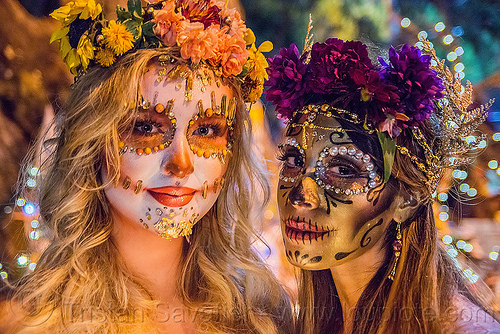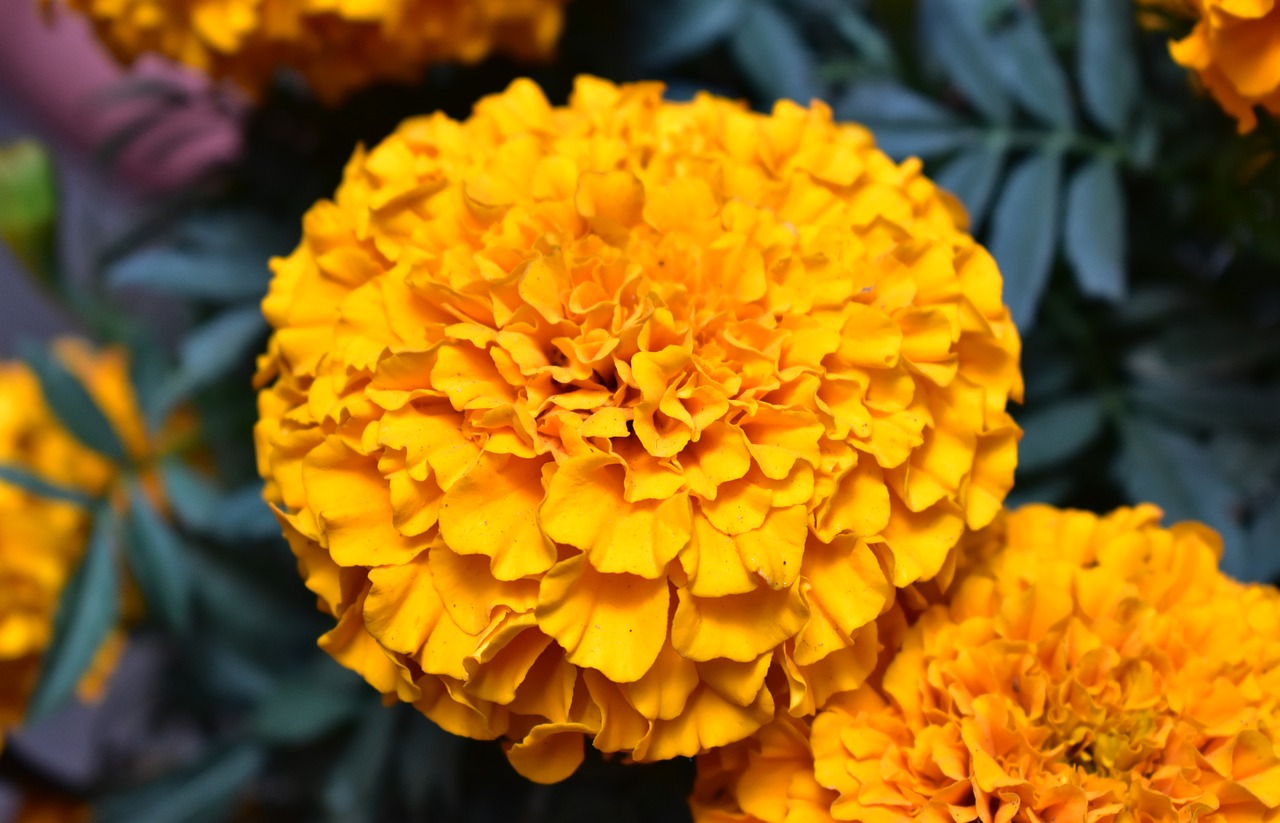

Part two to making this art installation look amazing, invisible hanging wire. If you have a painted ceiling, consider spray painting your hooks to match your ceiling. My hooks were white which made them basically invisible against the ceiling. Because the arch weighs very little, I did not need additional hooks but it you are installing these in your home be sure to check the weight capacity and use anchors as needed. I secured 1 1/4 inch hooks to the ceiling to hang my arch. The key is to make it look like it’s a floating art installation. Hanging decor from the ceiling, ALWAYS makes things look a little fancy. These straps were perfect for keeping my arch taught and they can be reused for future projects or cable organization. To create my arch, I used two branches (literally from outside) and bound them together using VELCRO®Brand ONE-WRAP® Ties.

Hanging frames for Dia De Los Muertos Altar The arch of an altar represents the passage between death and the living world. When building my ofrenda (altar), it was important to do a little damage to my recently painted walls, after all this is a temporary setup. The original name of the sketch reflected this cultural appropriation adopted by certain members of Mexican society: La Calavera Garbancera, with some sources referring to the latter word as slang for a woman who renounces her Mexican culture and adopts European aesthetics. The later christening would also come from slang, with the word ‘ catrin’ or ' catrina' often used to refer to a well-dressed man or woman, or ‘dandy.This year, I got to celebrate in partnership with The Home Depot. It was designed to be a satire referencing the high-society European obsessions of leader Porfirio Diaz, whose corruption led to the Mexican Revolution of 1911, and the toppling of his regime. Posada's original sketch of La Calavera Catrina was made around 1910. Again, the message was one of neutralisation: no matter which part of society you occupy, death kills all. However surrounding ‘cholera’ are a dozen skulls, all depicted with the worldly effects of a range of occupations, from jewellers to tailors and blacksmiths, to book-keepers and judges. The reduction of every person to bones, no matter of time, place, class or deed gave Posada's images a homogenising quality, the apparent message being ‘underneath, we are all the same’.Ĭombined with the darker implications of the skull, and Posada's illustrations became societal levellers of the bluntest kind. Published during a pandemic of the disease, the character of cholera in the 1910 sketch La calavera del cólera morbo (the calavera of the morbid cholera) is not a skull, and is rather a fantastical humanoid with the body of a snake. Posada's sketches were sometimes prophetic-apocalyptic, such as that published in 1899 depicting a volcanic eruption, the foreground scattered with a chaotic funerary scene of calaveras – including one rising from a grave.

These skull caricatures, or calaveras, would depict anything from national tragedies, to current events and figures, to historical incidents and literary characters. Mariachi digi stamp, Dia de Muertos digi stamps, Halloween digi stamps. What drew these illustrations together and made Posada’s fame particularly distinctive was the sketches' central motif: Posada's figures, regardless of occupation, class or status, were represented with skulls for faces. Men's Los Muertos Girl Red Flowers Sugar Skull Day of Dead Dia de los Muertos Mexican Heritage Rose Love Long Sleeve T-Shirt. Posada, who was born in Mexico in 1852, would create cartoonish lithographs and engravings to satirically illustrate political and societal issues his work was frequently published in the Mexican press. The ingredients of the modern image of La Catrina were drawn together as recently as 1910 by the Mexican illustrator Jose Guadalupe Posada. These ofrendas continue to be associated with Day of the Dead, which over the centuries also absorbed pagan and Catholic celebration customs – including the dates of the festival straddling both All Hallows Eve, All Saints Day and All Soul's Day. But the defining image of the modern festival would come later – and from an unexpected source. The ancients' view of death was not a mournful one: they saw it as a part of the cycle of life, and celebrated the departed by leaving offerings on makeshift altars, or ofrendas, that would assist them in their onward trials. Her role was to watch over the bones of the dead, and her presence was front-and-centre during any recognition of those who had passed on.Īnd where had those souls passed to? The belief amongst the Mesoamericans was that the dead make a journey that descends nine levels to the depths of Chicunamictlan. This honour belongs to Mictēcacihuātl – the queen of the Aztec underworld of Chicunamictlan. La Catrina was not Latin America’s first grand lady of the afterlife.


 0 kommentar(er)
0 kommentar(er)
